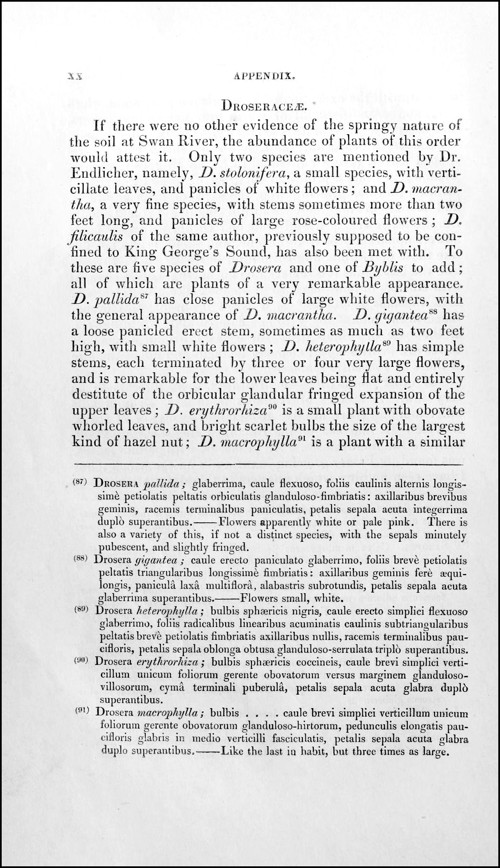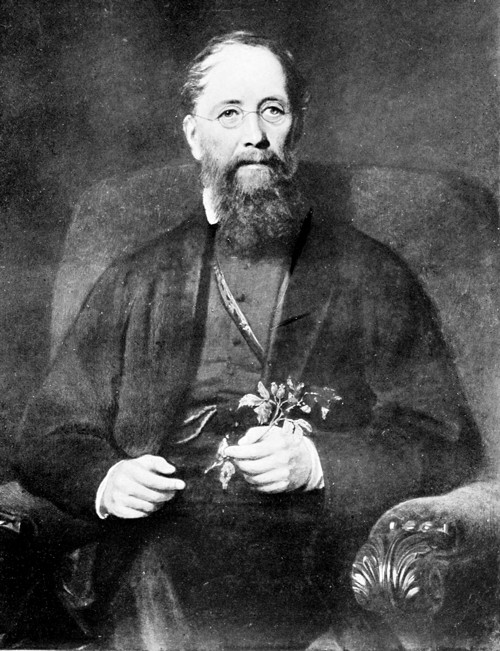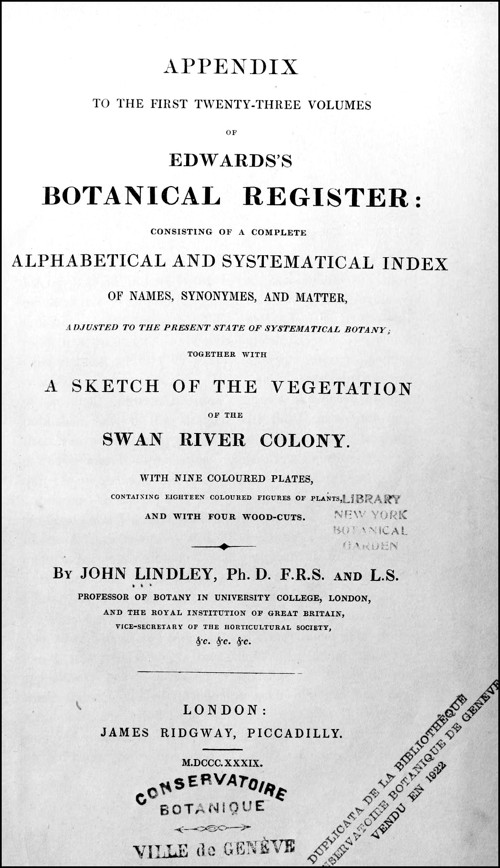John Lindley (1799–1865)
John Lindley was an English botanist, gardener and orchidologist. Born in Catton, near Norwich, England, he was one of four children of George and Mary Lindley. George Lindley was a nurseryman and John assisted in the garden as a boy and also collected the wild flowers he found growing in the Norfolk countryside. He would have liked to go to university or to buy a commission in the army, but the family could not afford either. He became Belgian agent for a London seed merchant in 1815. At this time, Lindley became acquainted with the botanist, William Jackson Hooker, who allowed him to use his botanical library and who introduced him to Sir Joseph Banks. Banks offered him employment as an assistant in his herbarium.
From 1821 to 1826, Lindley published a folio work with coloured illustrations that he had painted himself, “Collectanea botanica or Figures and botanic Illustrations of rare and curious exotic Plants”. Many of these plants came from the family Orchidaceae with which he had a lifelong fascination. Lindley was appointed assistant secretary to the Horticultural Society and its new garden at Chiswick in 1822, where he supervised the collection of plants. Assistant secretary to the Horticultural Society from 1822, Lindley was, in 1829, appointed to the chair of botany at University College, London, which he retained until 1860. He also lectured on botany from 1831 at the Royal Institution, including delivery of the 1833 Royal Institution Christmas Lecture. From 1836, at the Chelsea Physic Garden, he started the society’s flower show in the late 1830s. Still an annual event, The Chelsea Flower Show is the most famous horticultural exposition in the world.
During his professorship, Lindley wrote many scientific and popular works, as well as making significant contributions to the Botanical Register, of which he was the editor for many years, and to The Gardeners’ Chronicle, where he was in charge of the horticultural department from 1841. He was a fellow of the Royal, Linnean and Geological Societies. He received the Royal Society’s royal medal in 1857, and in 1853 became a corresponding member of the Institut de France. About this time, the Horticultural Society of London, which became the Royal Horticultural Society at a later date, asked Lindley to draw roses.
Lindley also described the plants collected on Thomas Livingstone Mitchell’s expeditions of 1838, and wrote an Appendix to Edwards’s Botanical Register of 1839, describing plants collected by James Drummond and Georgiana Molloy of the Swan River Colony in Western Australia. According to John Ryan, Lindley’s 1840 ‘Sketch of the Vegetation of the Swan River Colony’ provided ‘the most succinct portrait to date of the flora of the Swan River Settlement’, which had been established in 1829. The Sketch, which was published during November 1839 and January 1840, in Edwards’ Botanical Register and separately on its completion, was illustrated by nine hand-coloured lithographs and four wood-cuts. In this publication Lindley described Byblis gigantea and a number of iconic Drosera taxa including D. gigantea and D. erythrorhiza.
For more information on the life of John Lindley please see Wikipedia.
The ICPS claims no copyright on the content of this page. Please see the list of sources used for the pages on key historical figures in the study of carnivorous plants.

Page from Alphabetical and systematical index of names, synonymes, and matter, adjusted to the present state of systematical botany; together with a sketch of the Vegetation of the Swan River Colony.

Plate 14 from Makers of British Botany (1913), depicting John Lindley.

Alphabetical and systematical index of names, synonymes, and matter, adjusted to the present state of systematical botany; together with a sketch of the Vegetation of the Swan River Colony.
